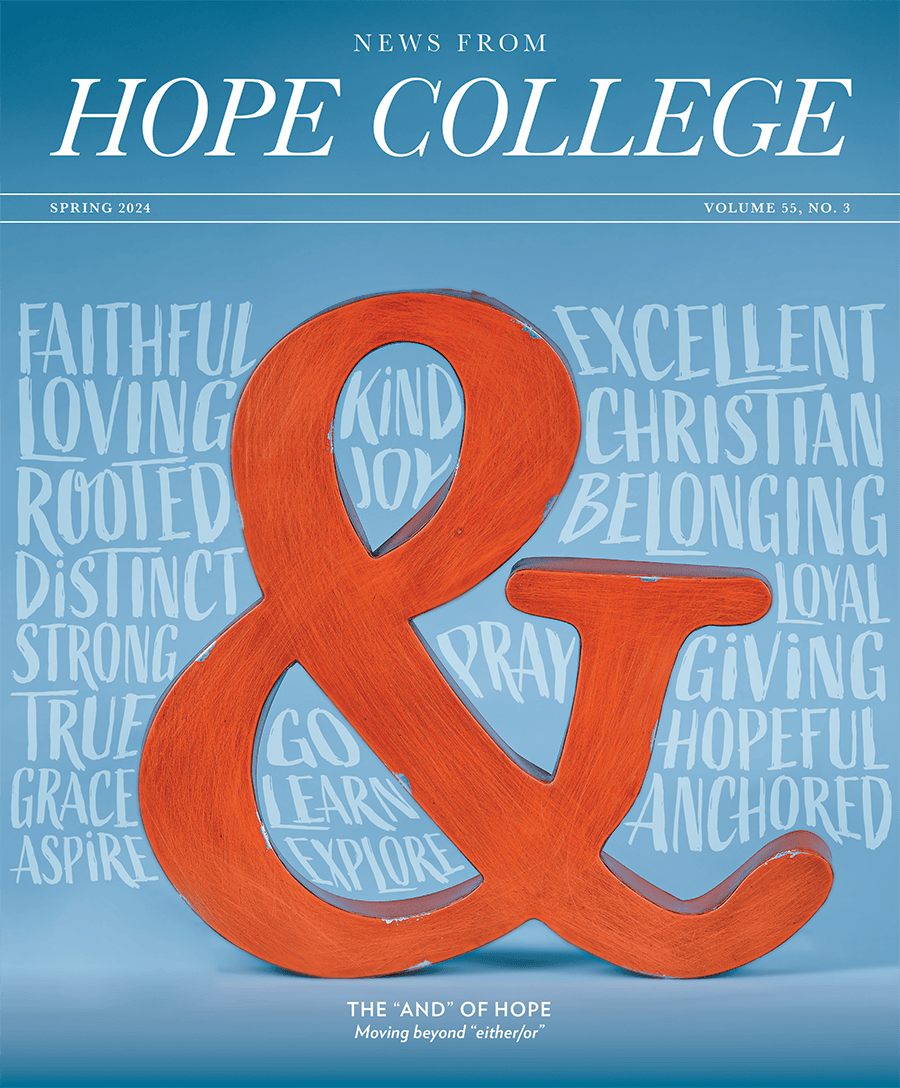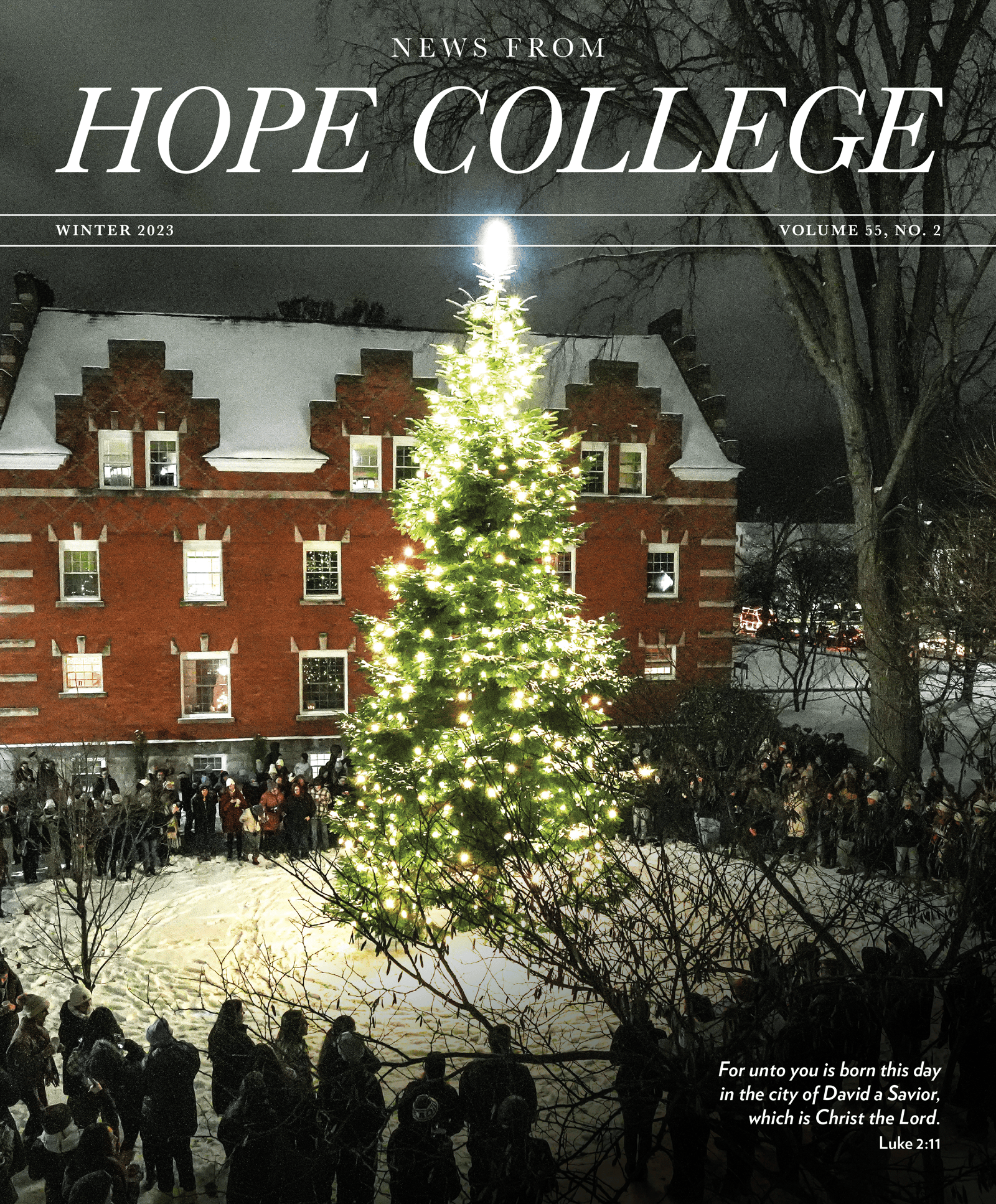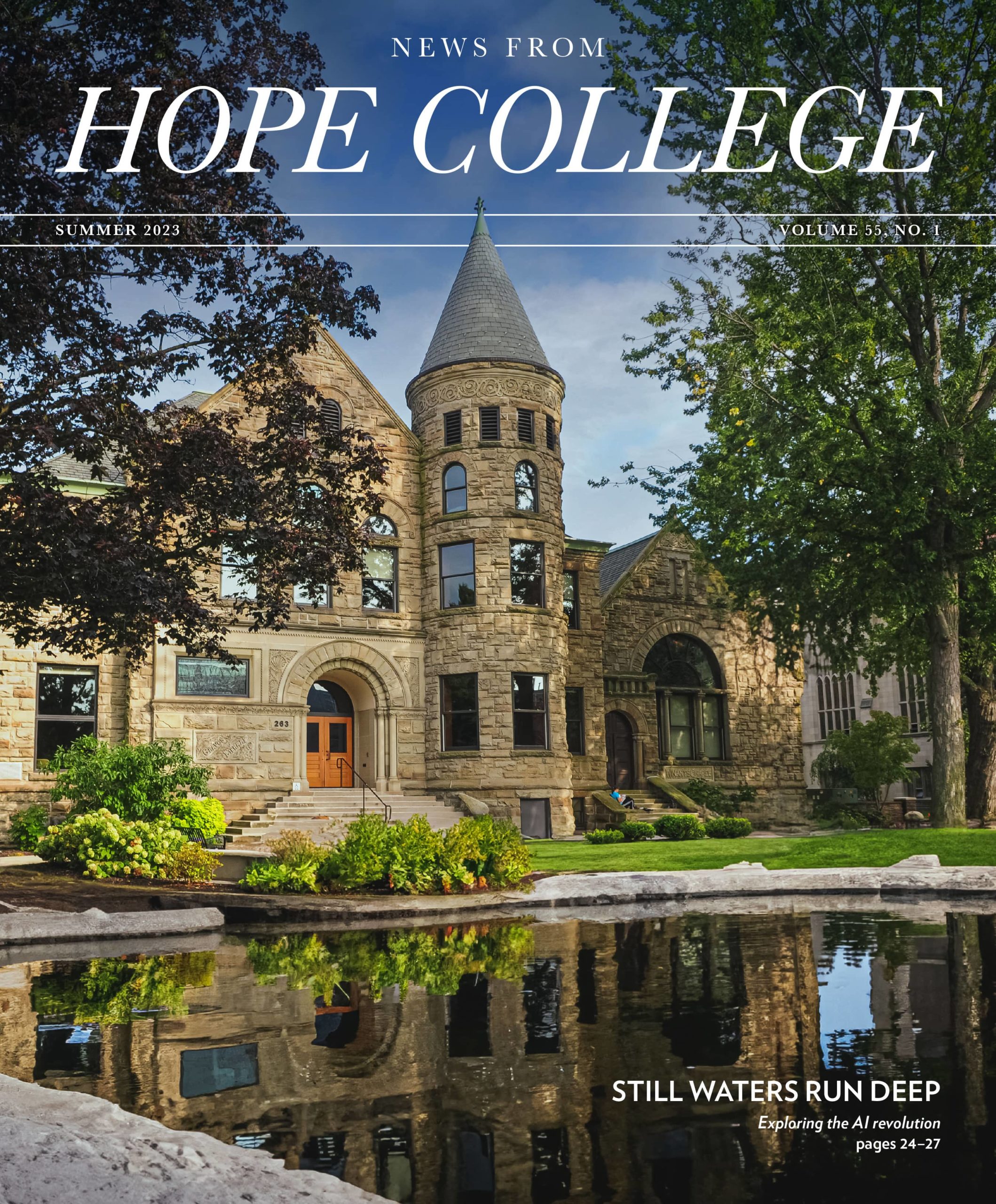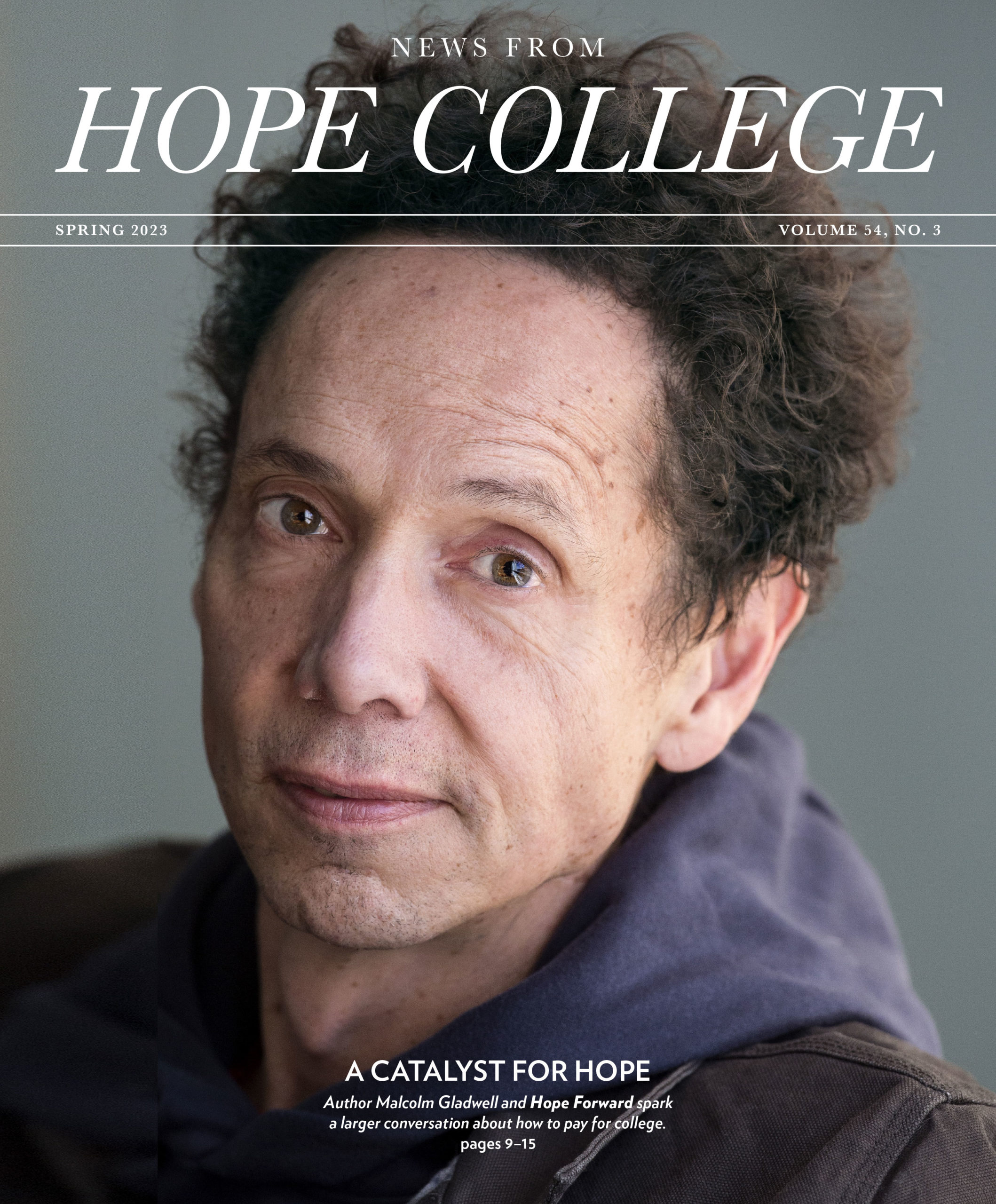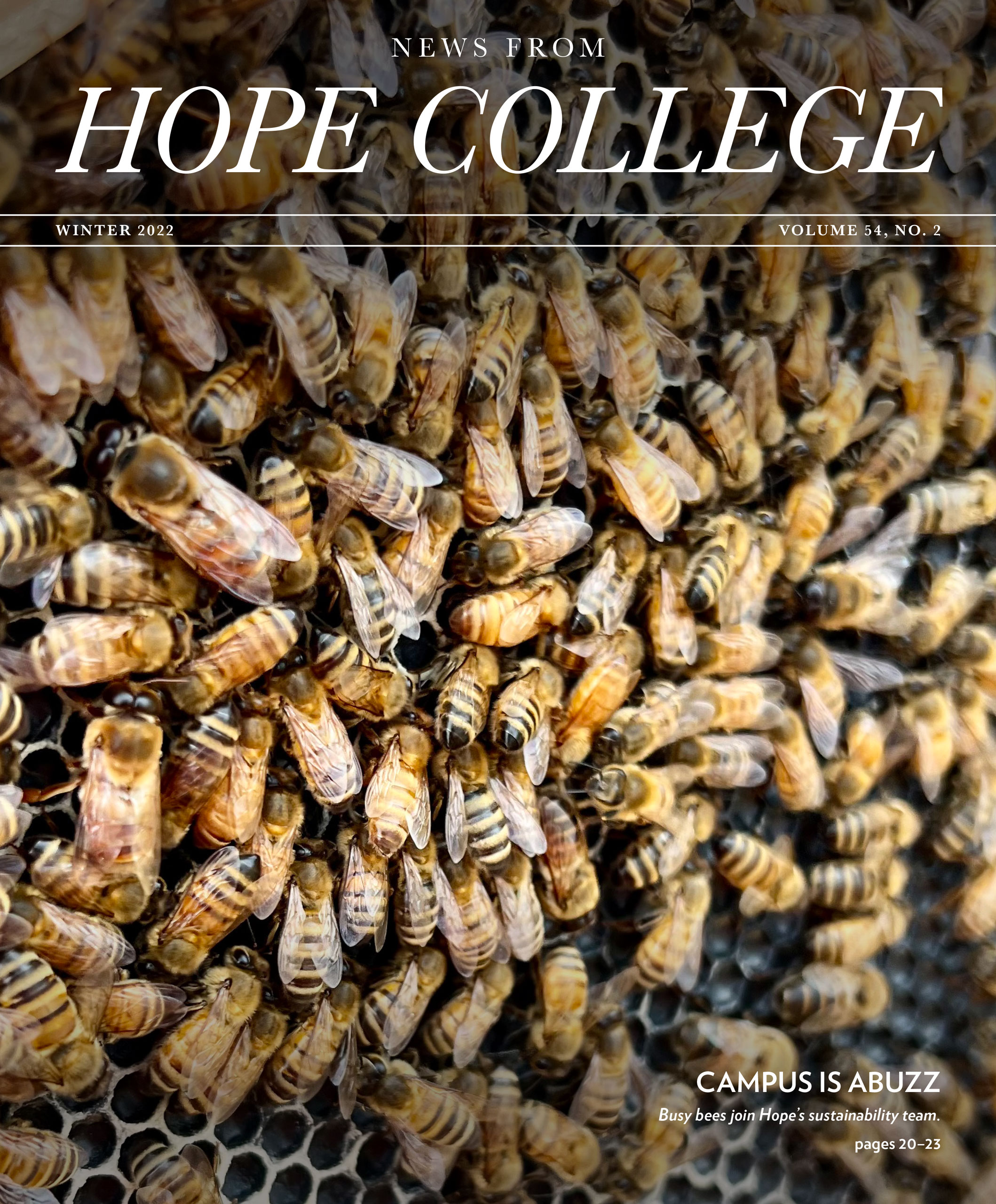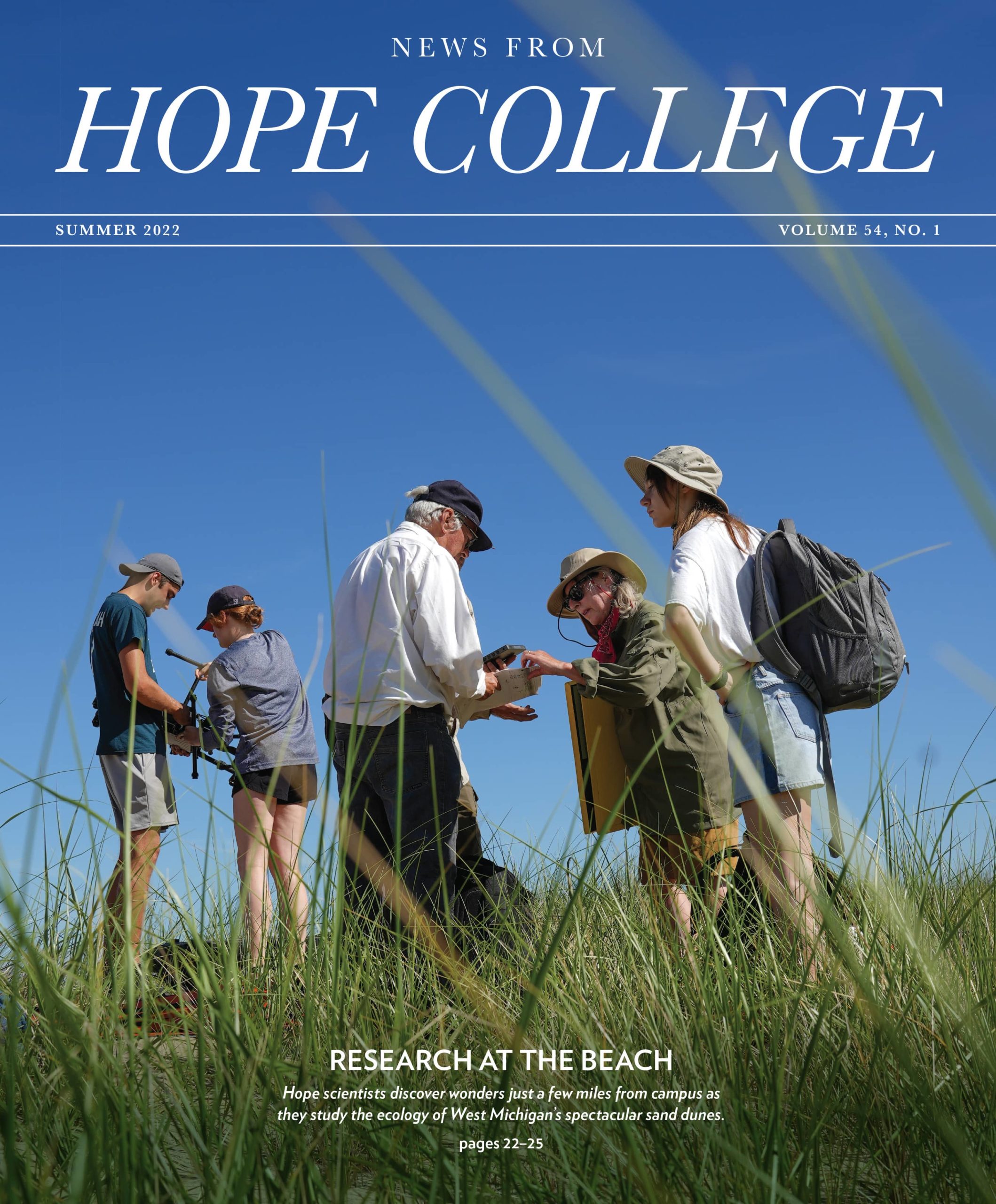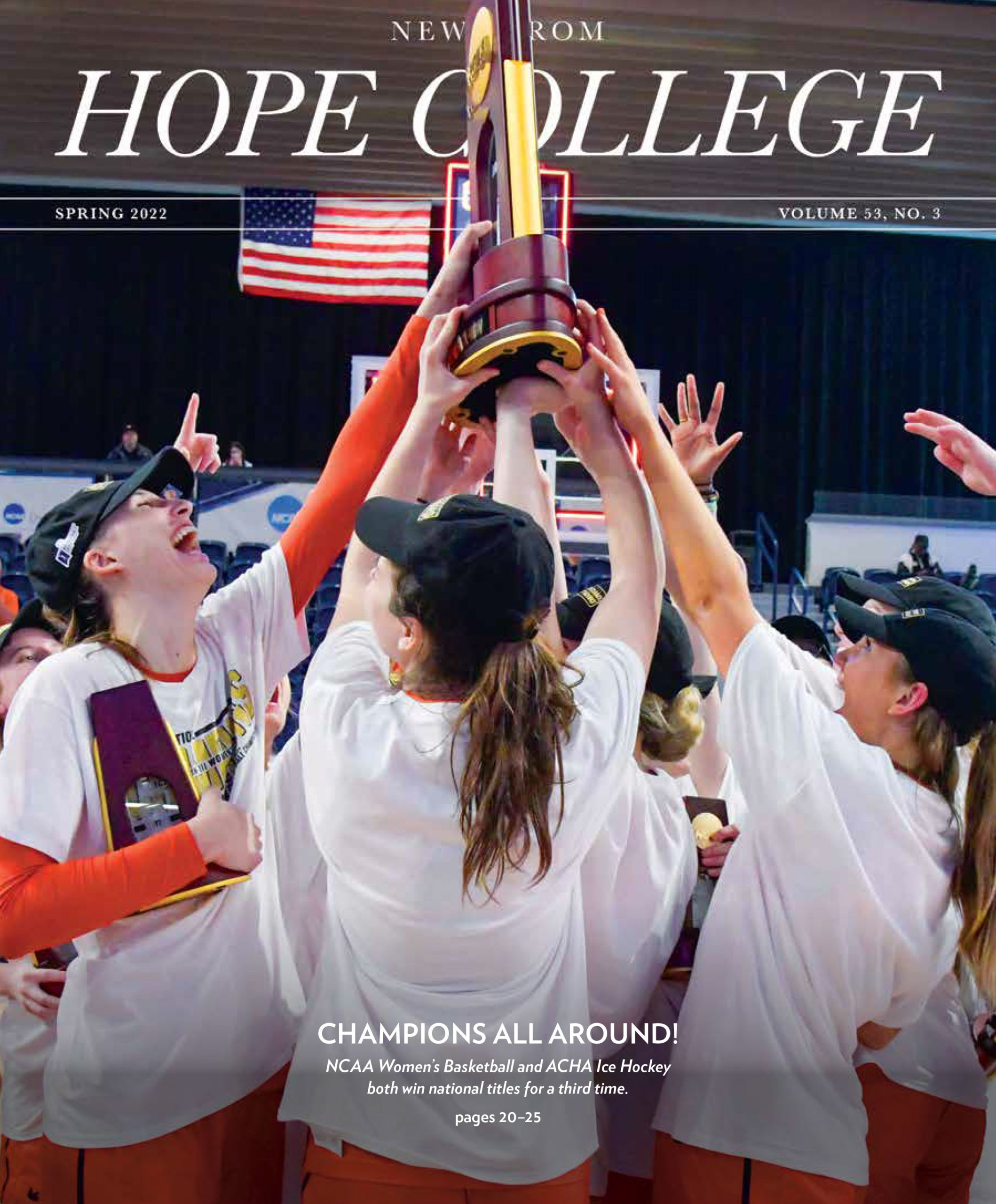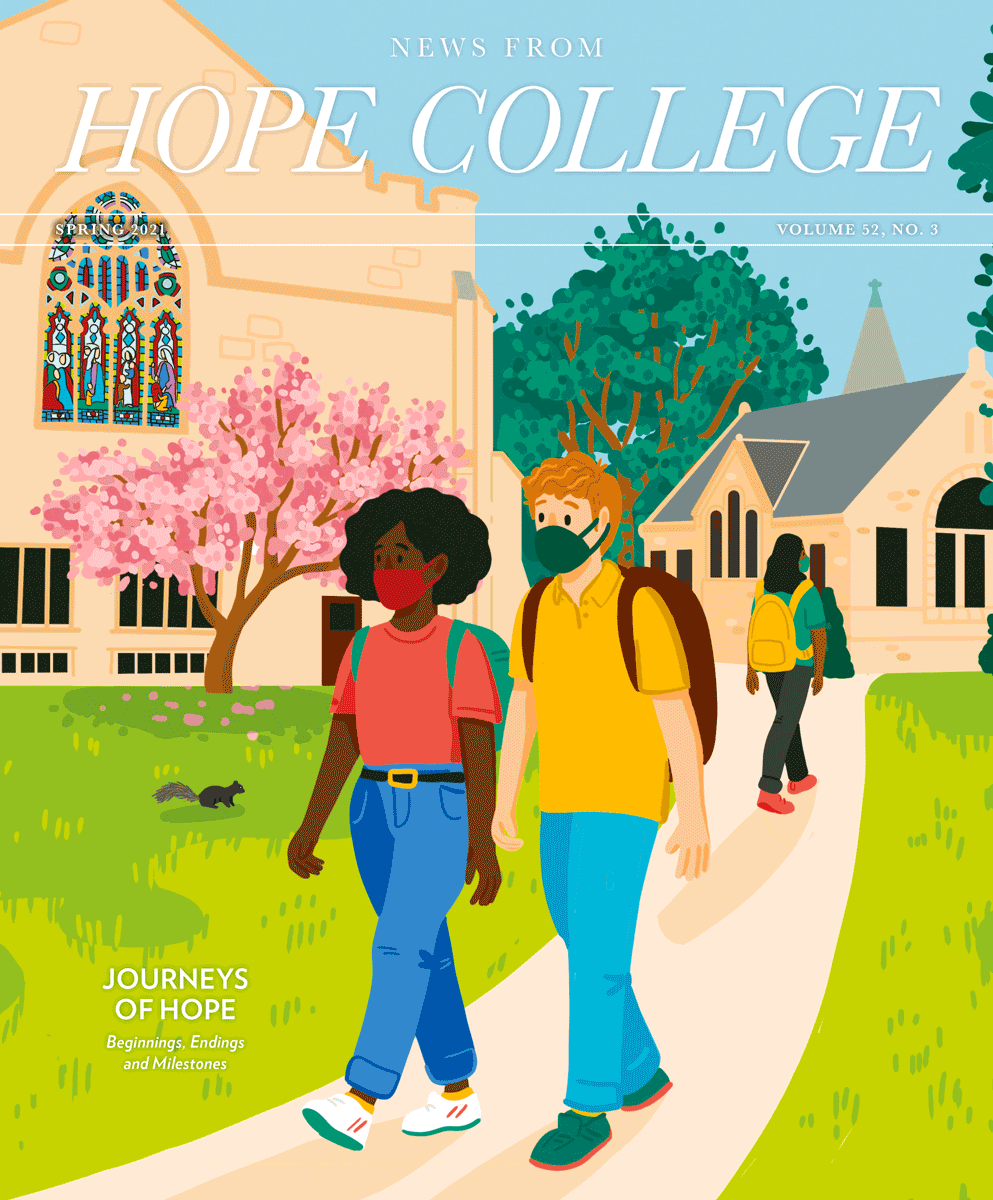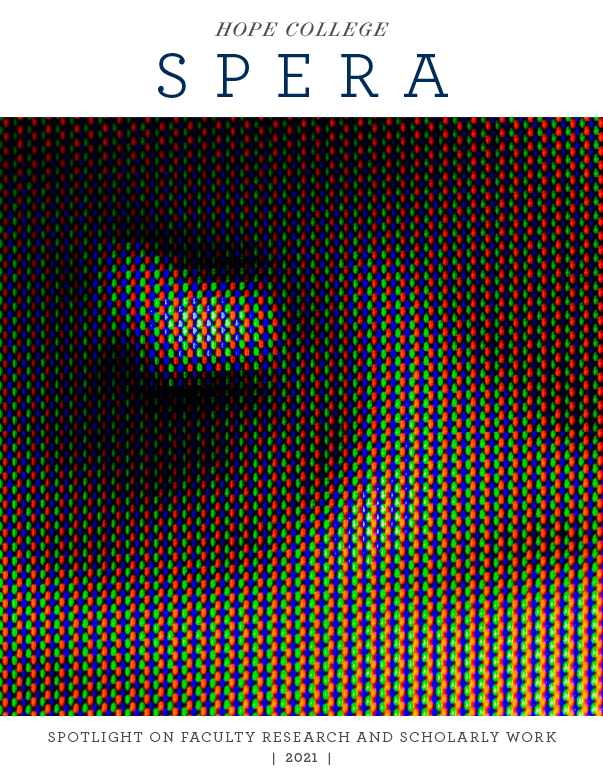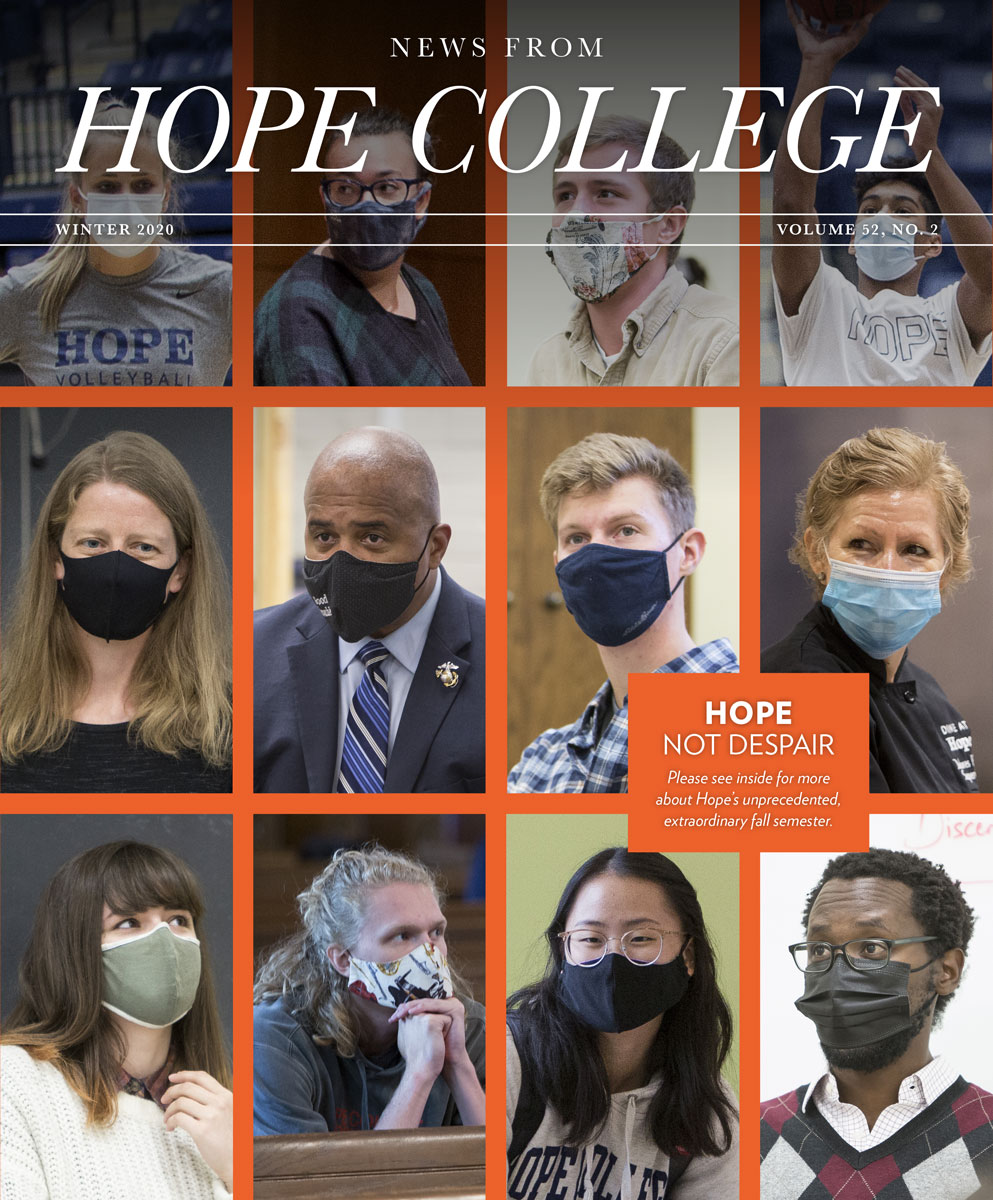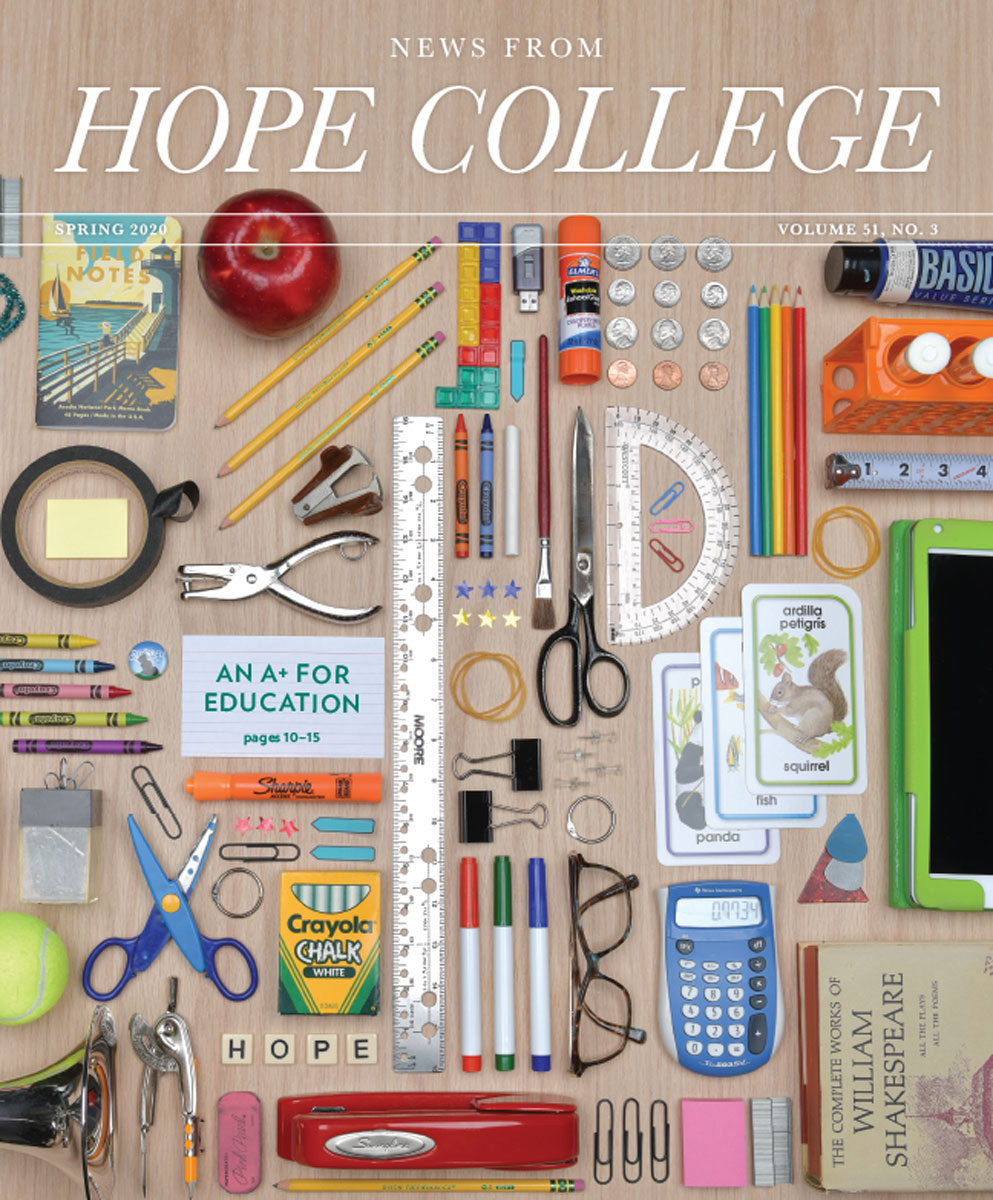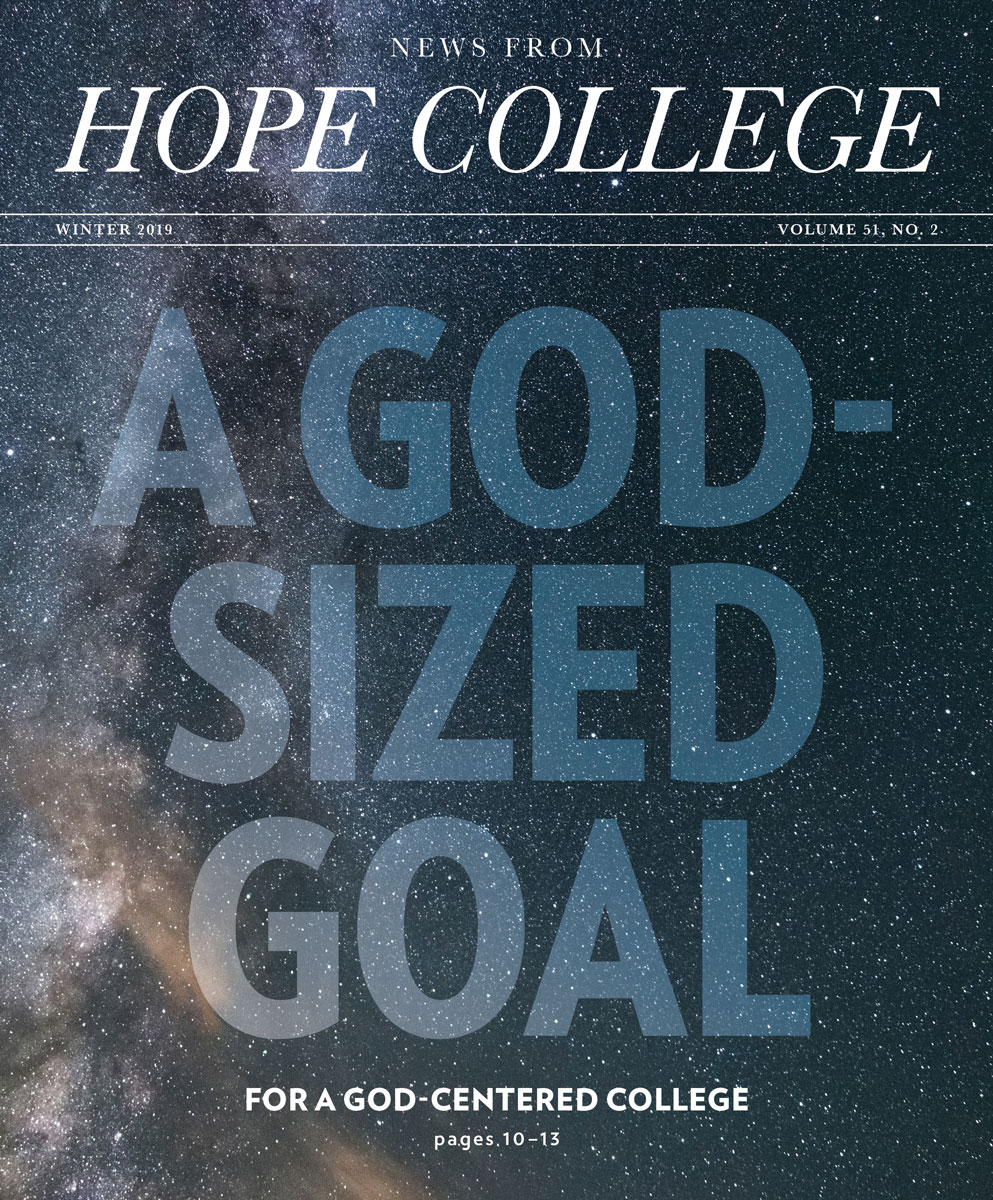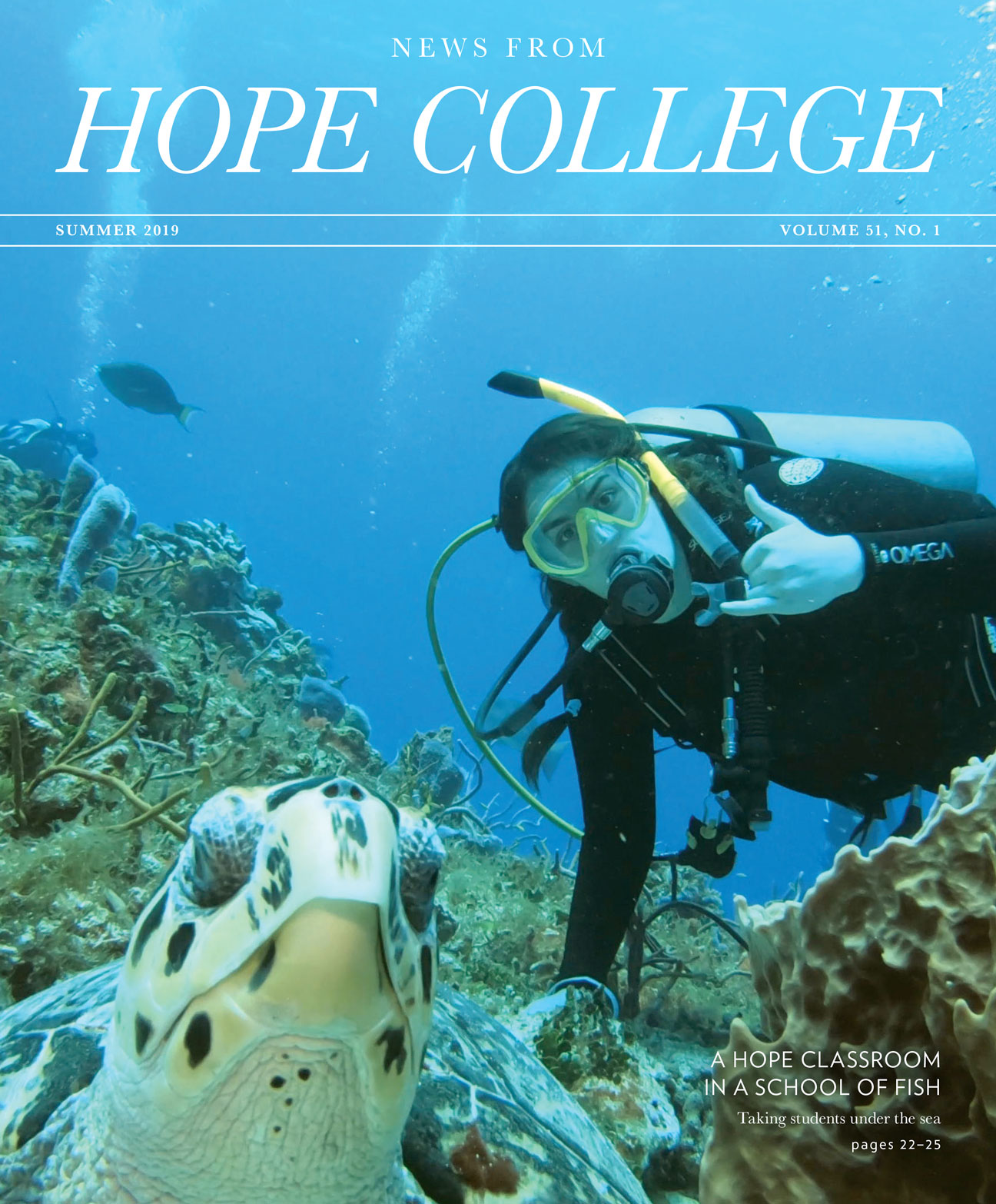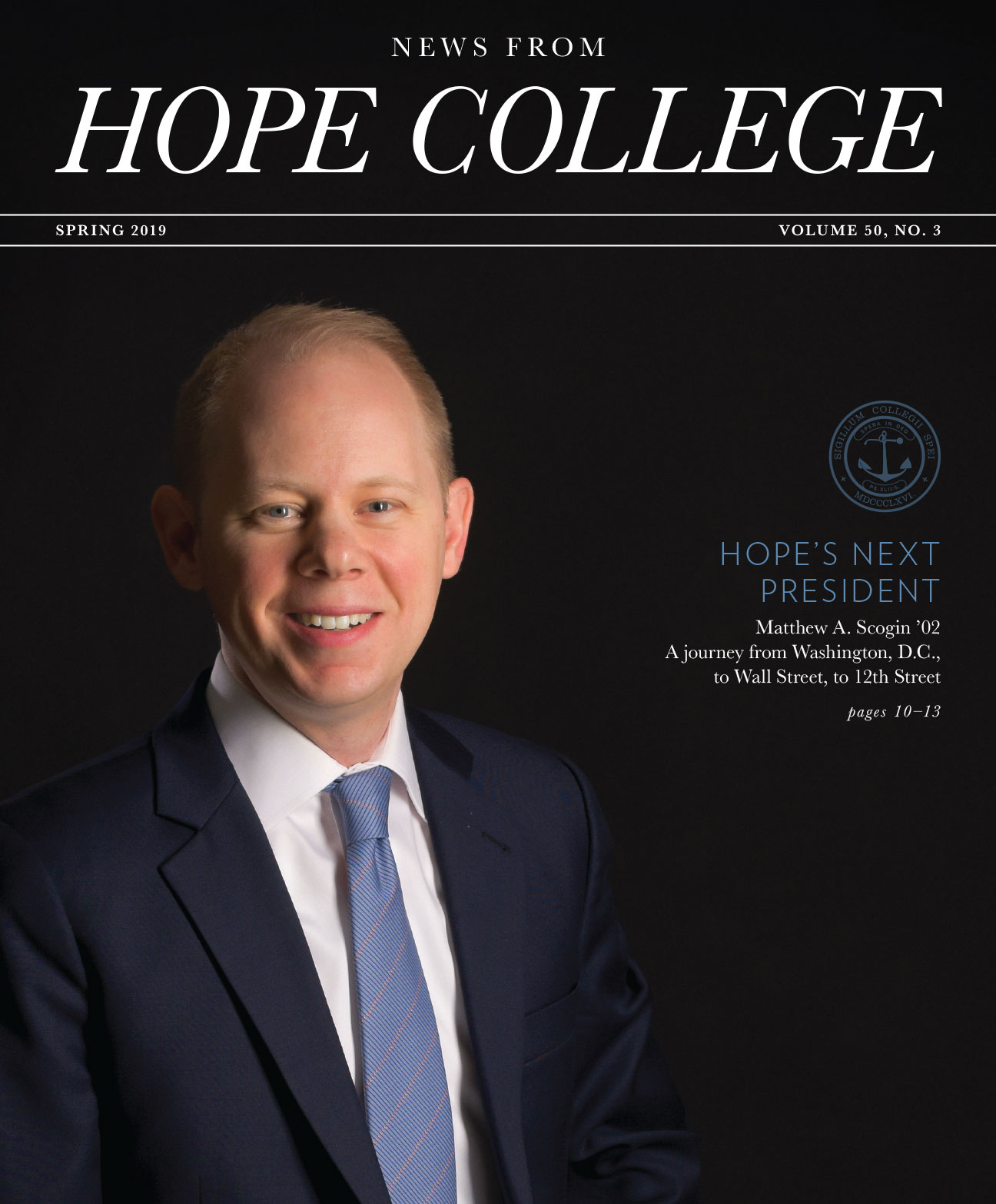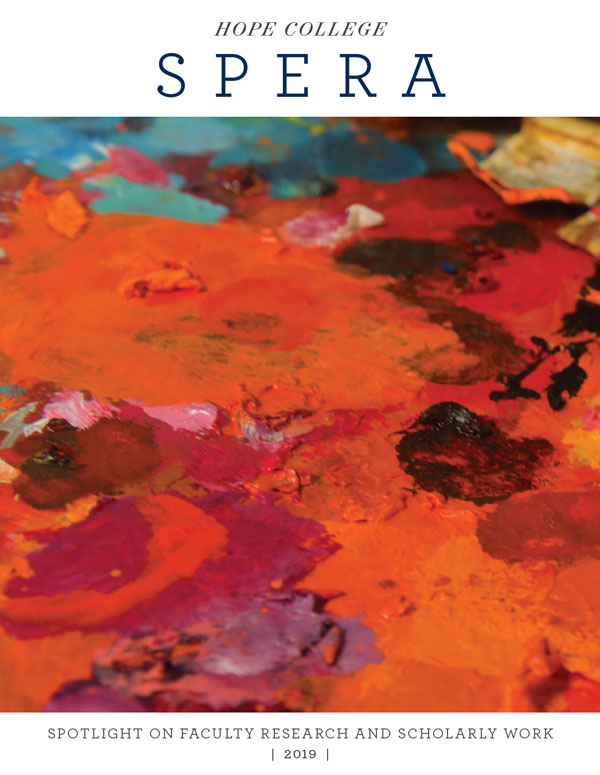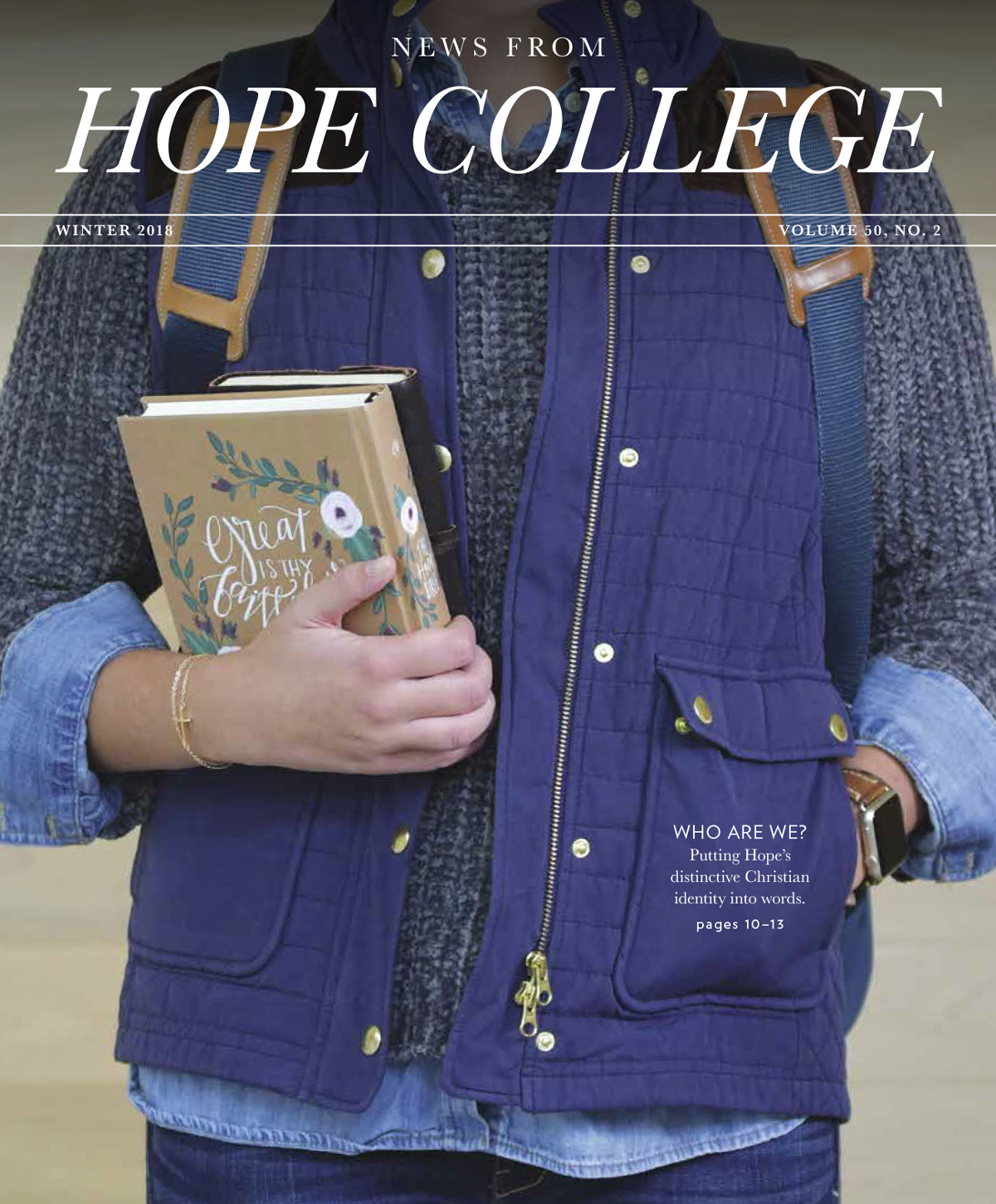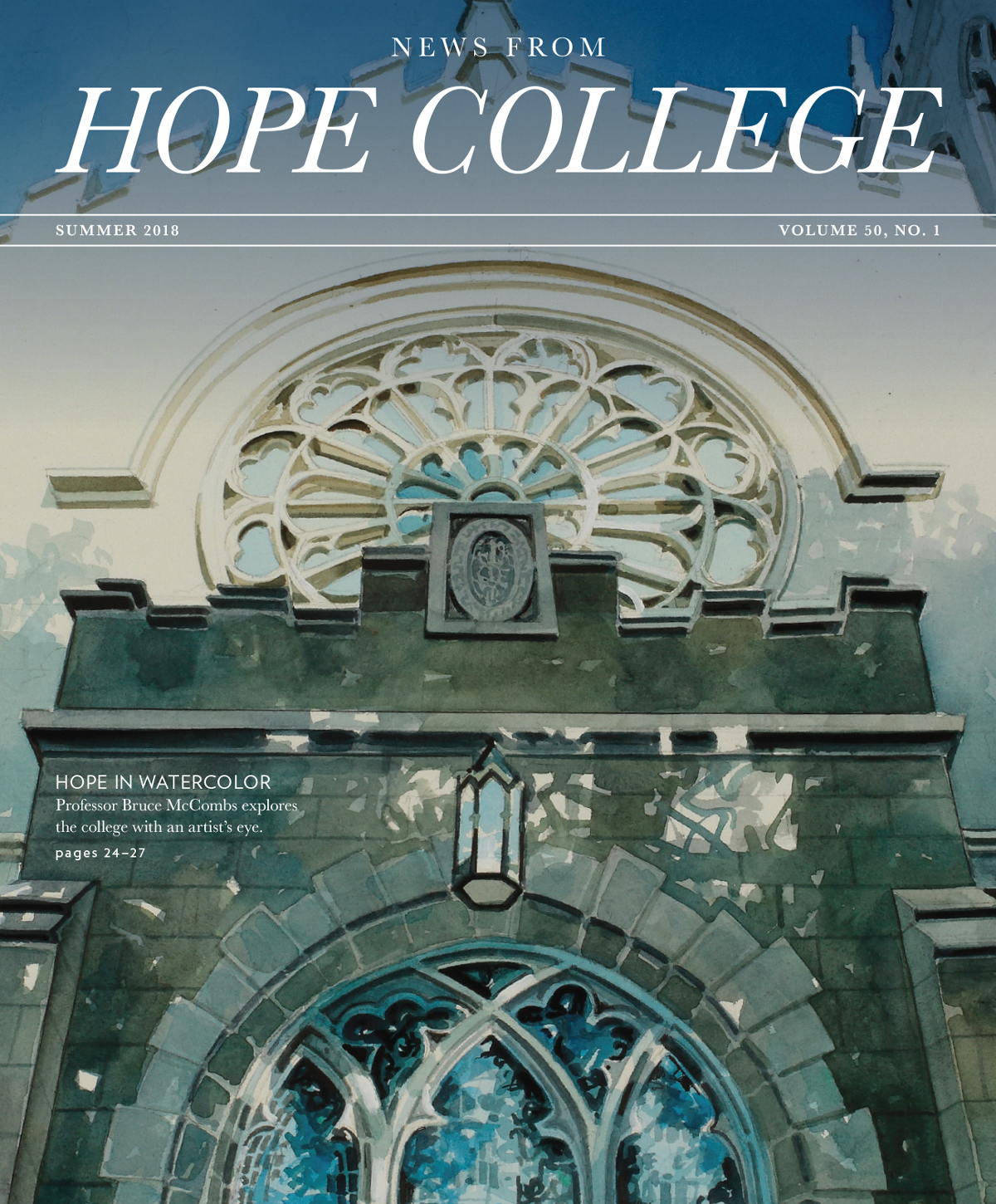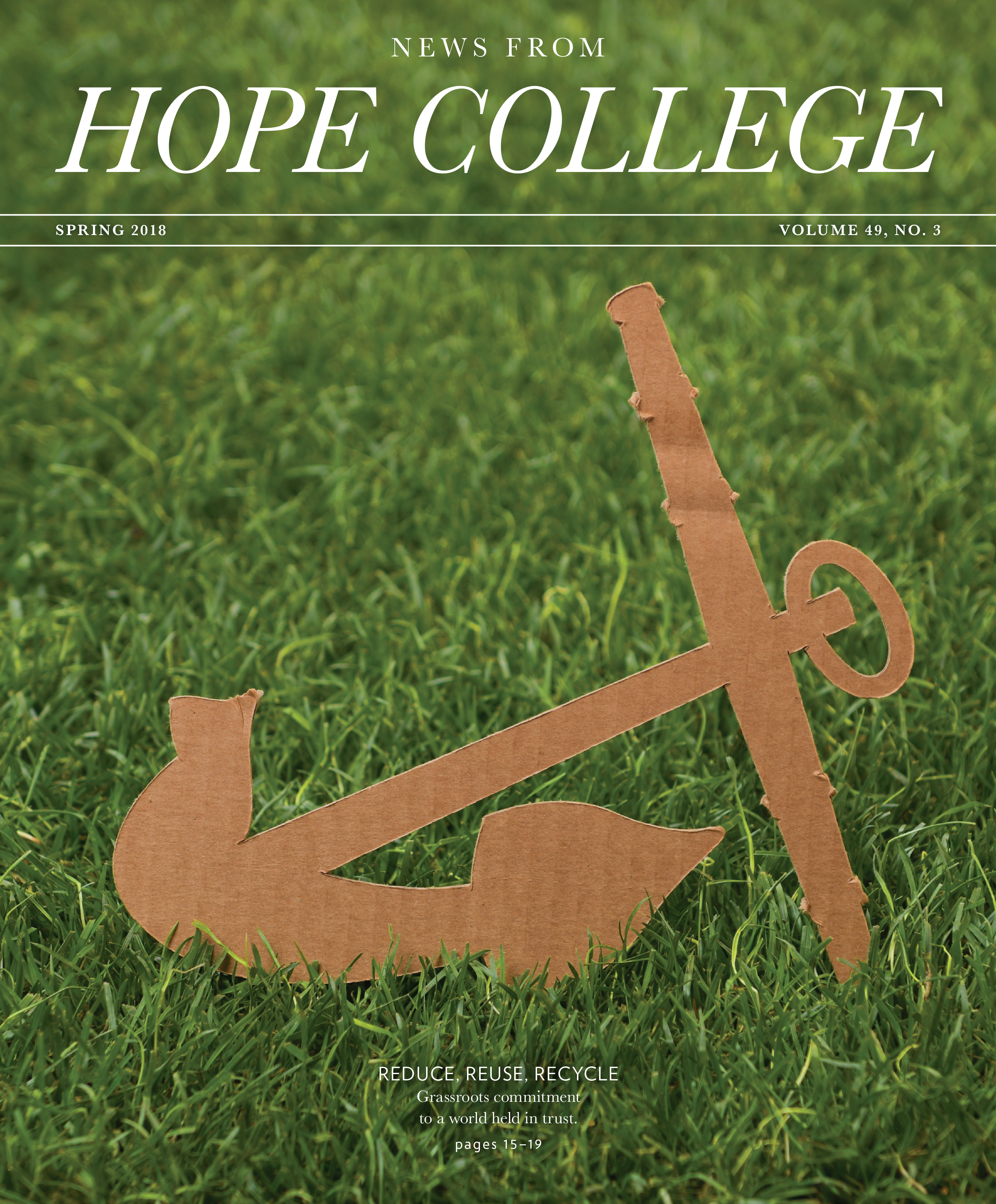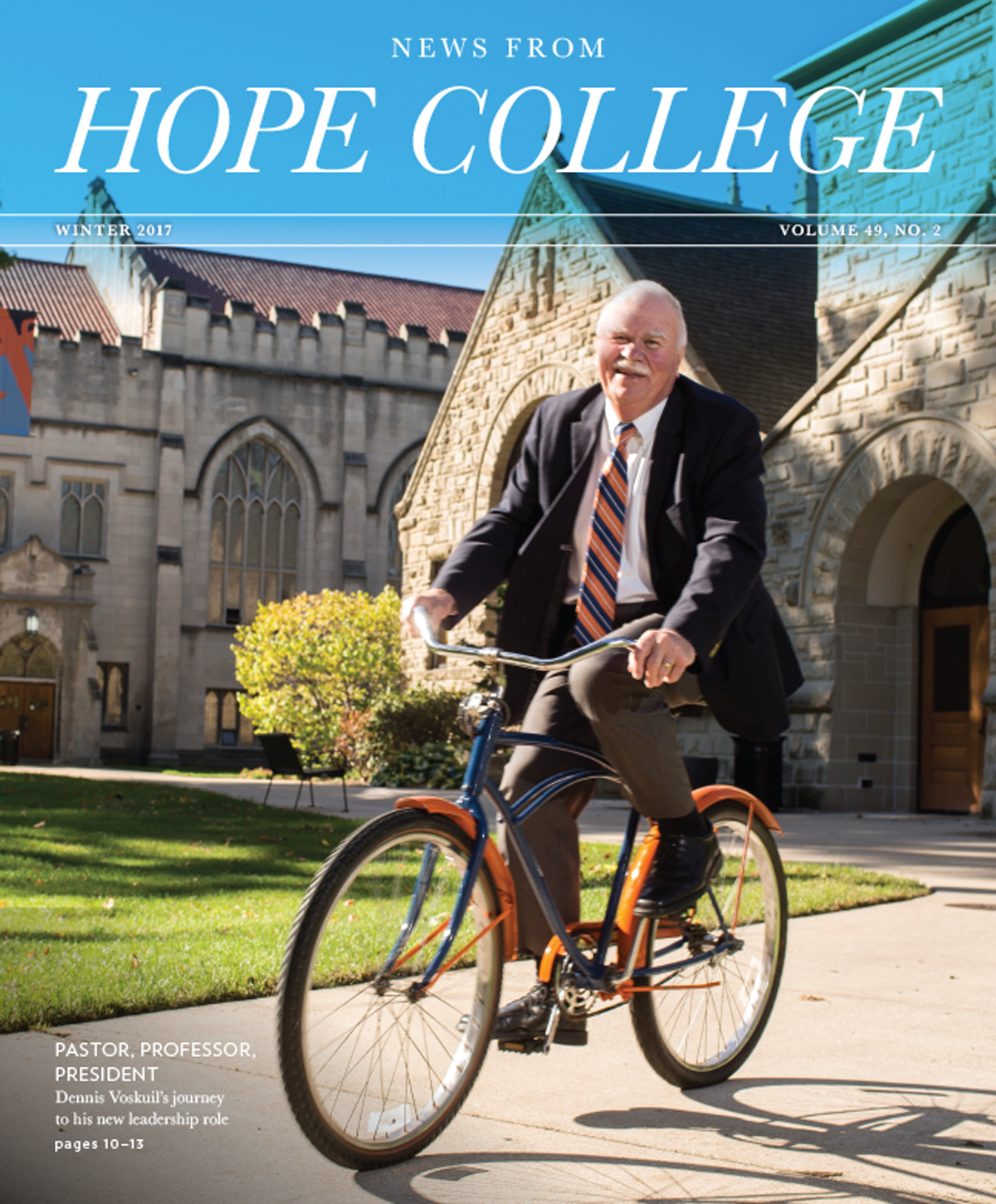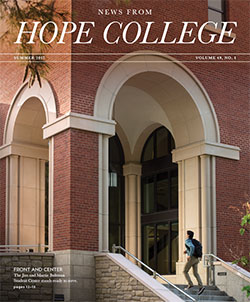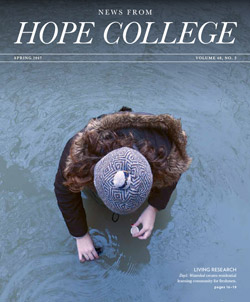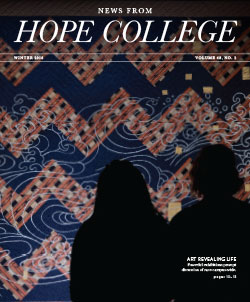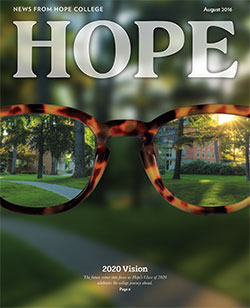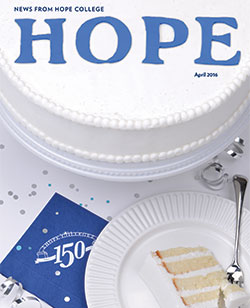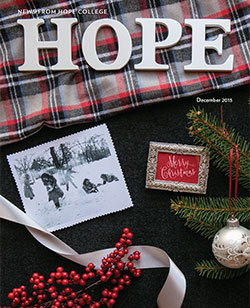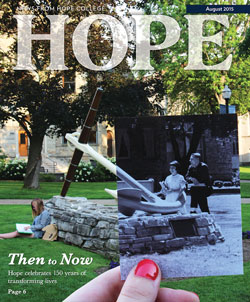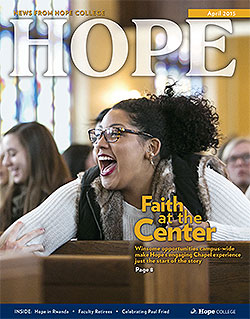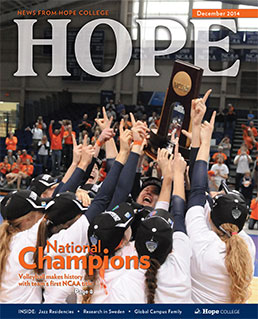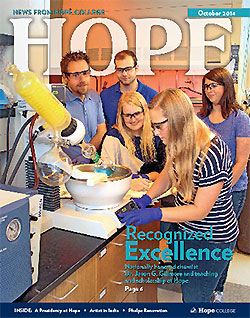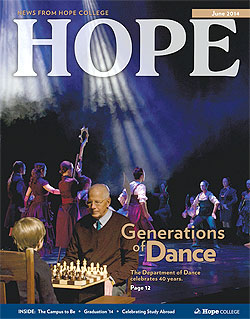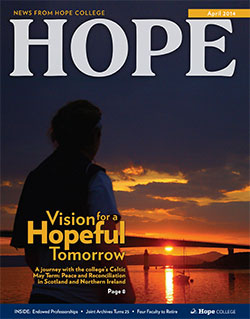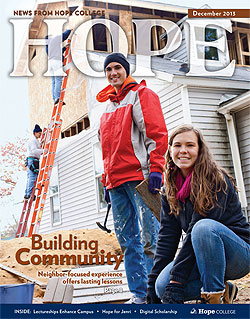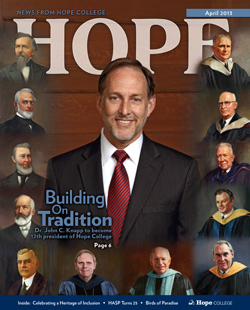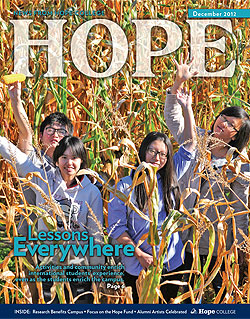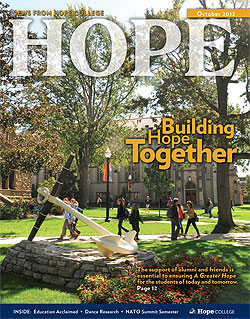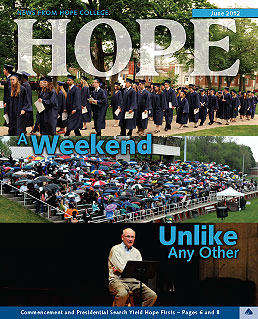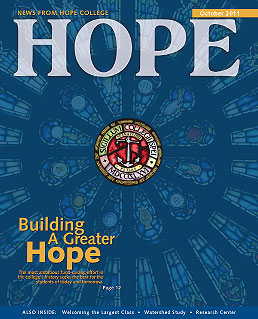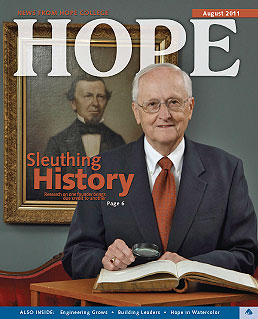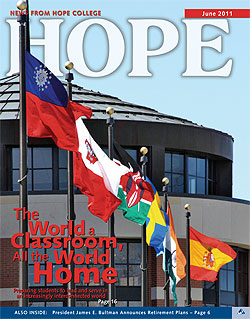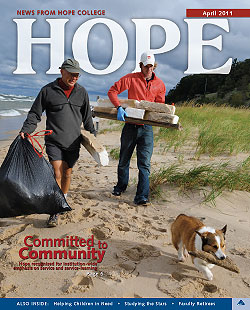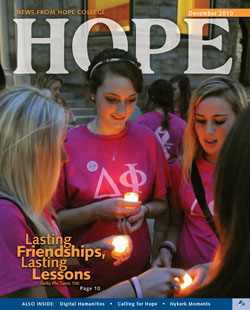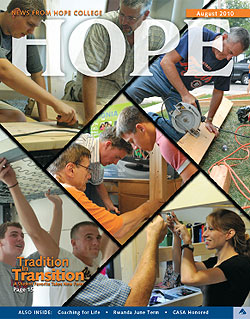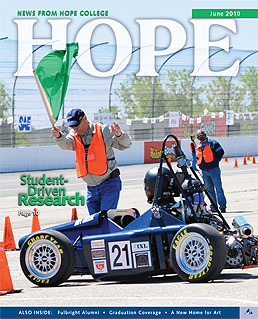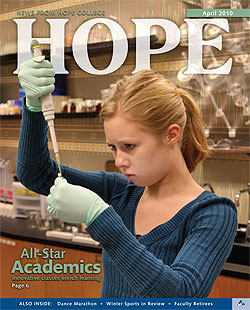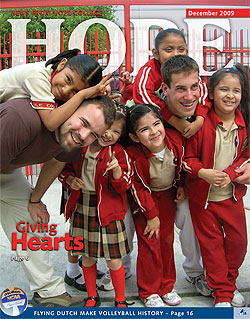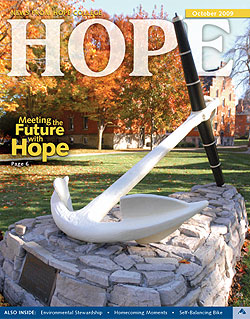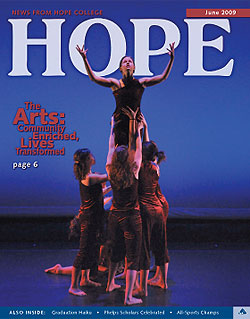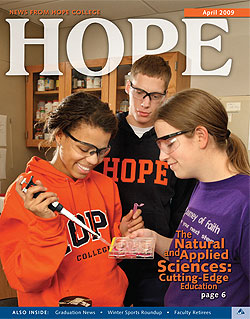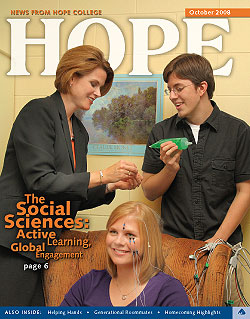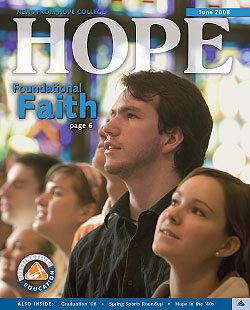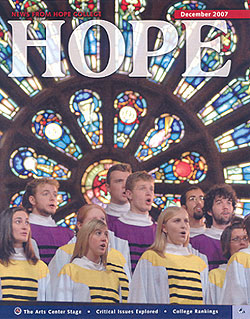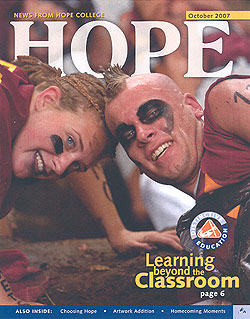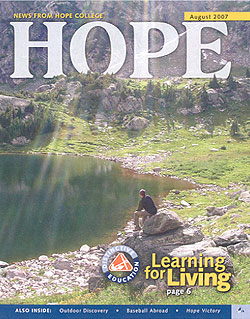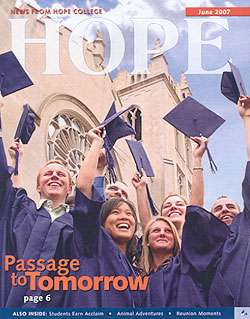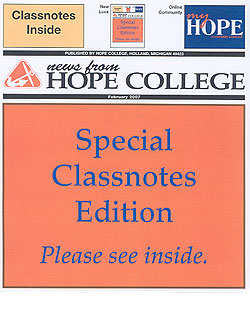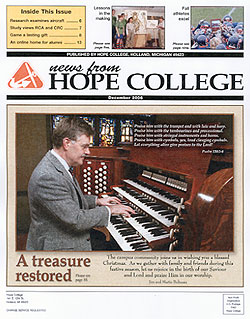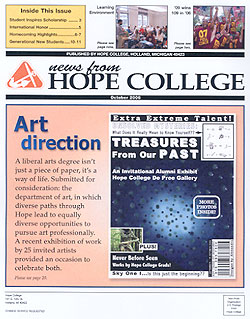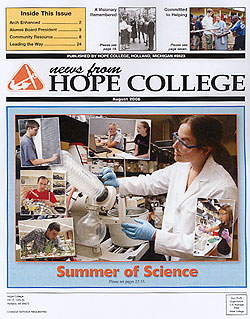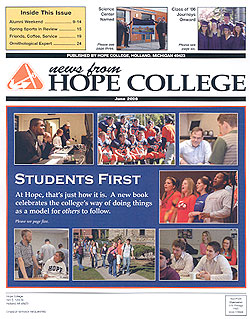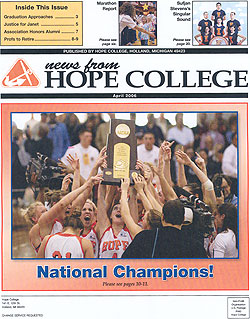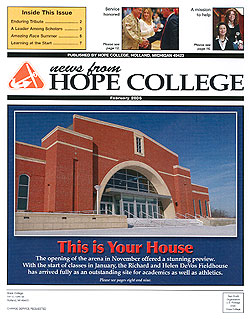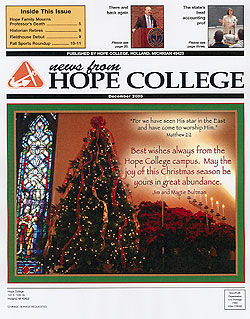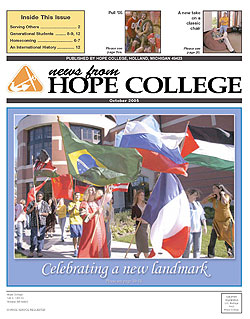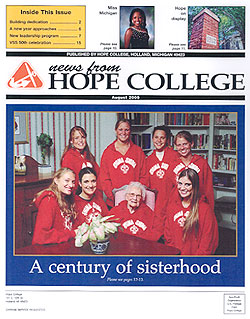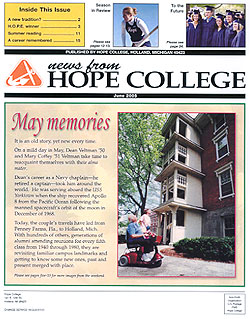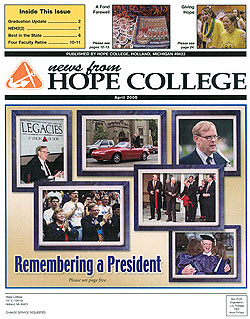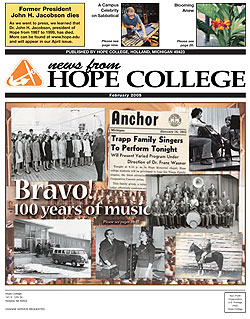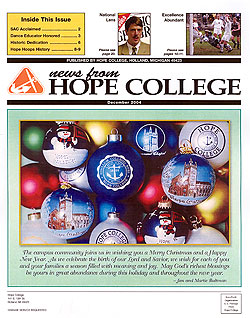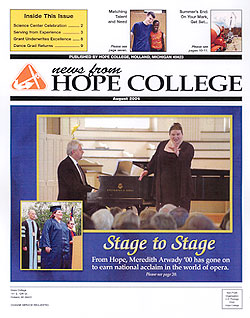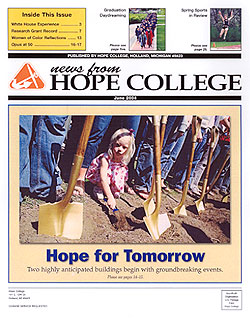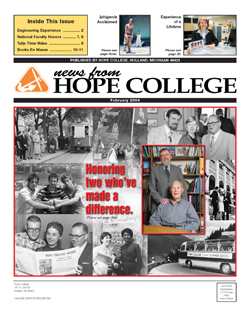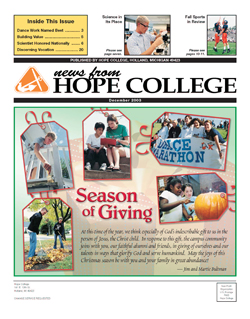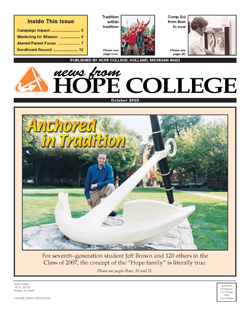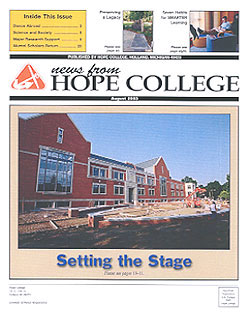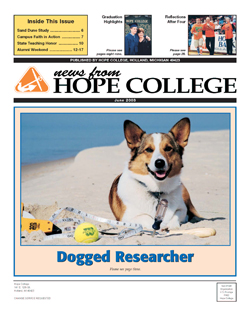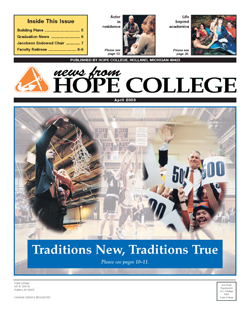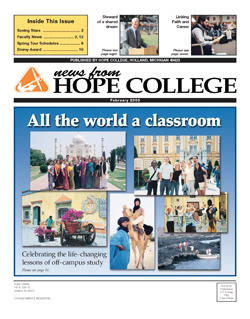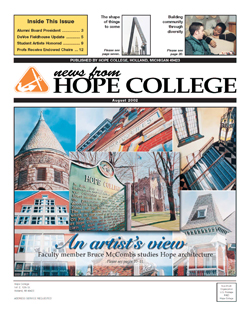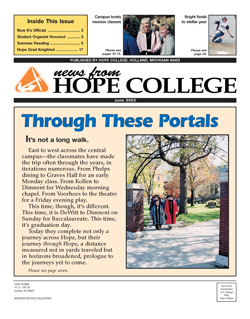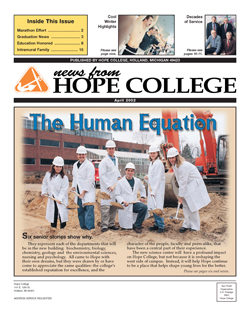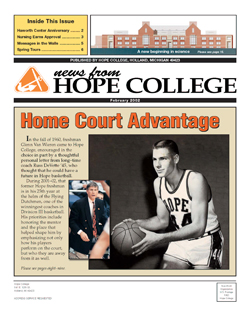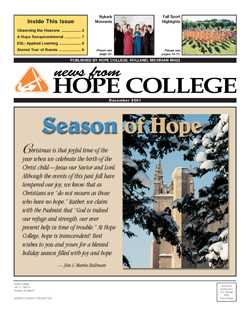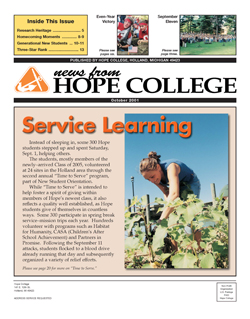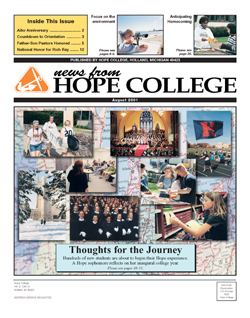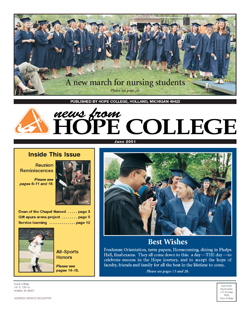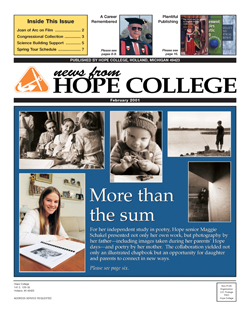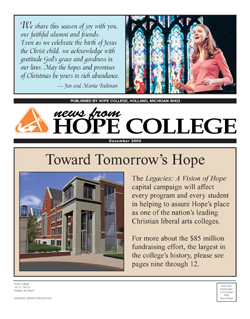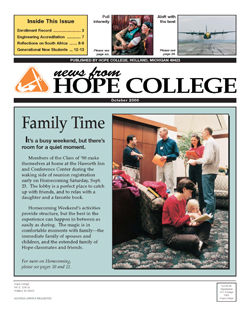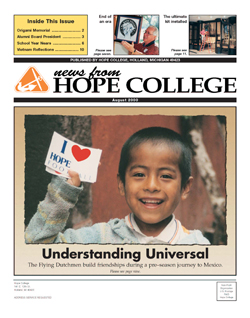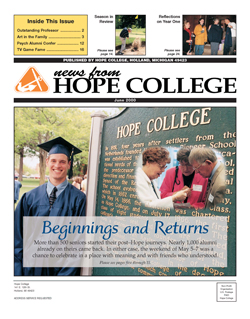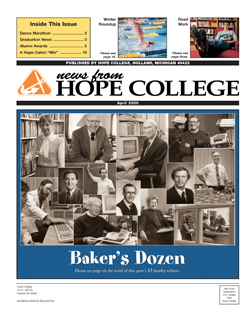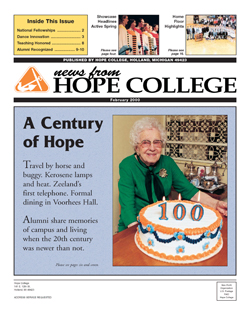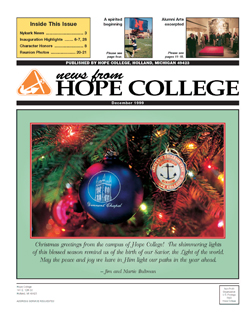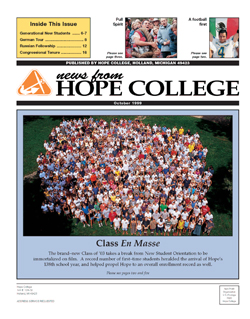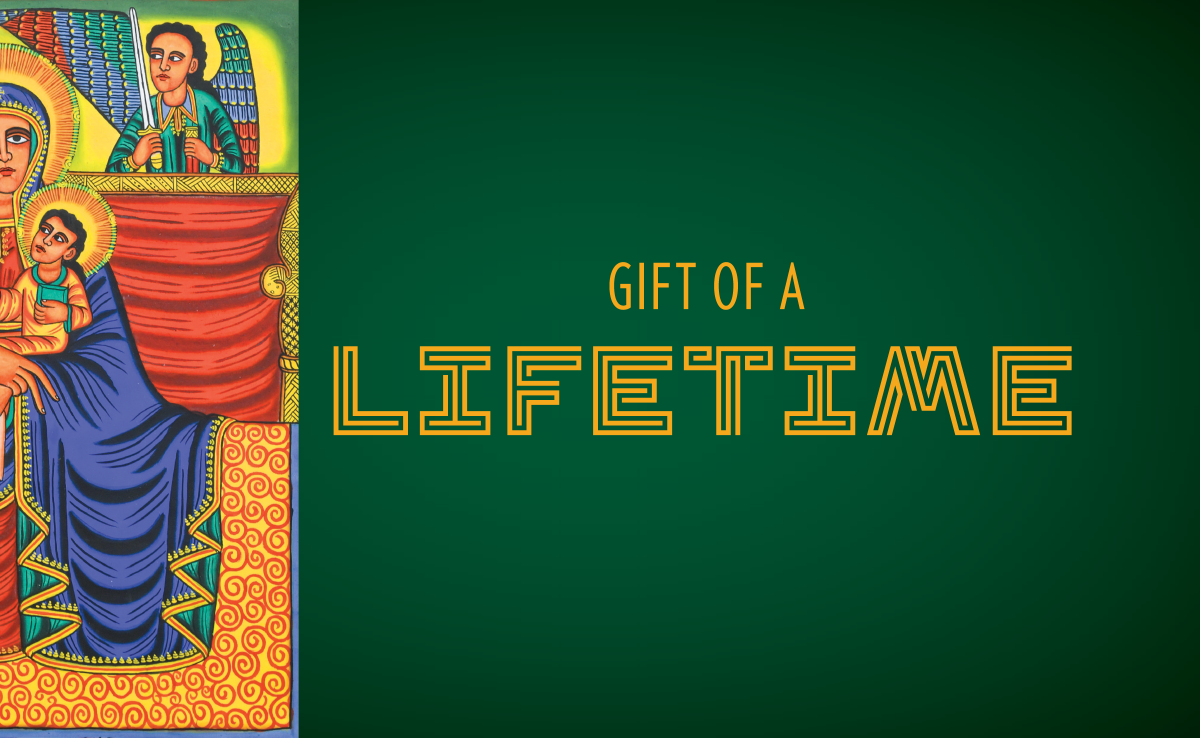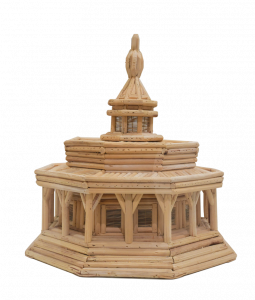Gift of a Lifetime
In a sense, the long and winding road that led to a unique exhibition of contemporary Ethiopian Orthodox Christian art at the college’s Kruizenga Art Museum this fall began at Hope as well.
Dr. Neal Sobania ’68, a former director of international education and history professor at Hope who is retired from Pacific Lutheran University, developed his strong enthusiasm for learning about and visiting other countries into a professional focus as a Hope student. He benefited from mentors like Dr. Paul. G. Fried ’46, who became a lifelong friend, and the opportunity that the college provided to study abroad through programs such as the Vienna Summer School. From Hope he journeyed next to Ethiopia as a Peace Corps volunteer, beginning an interest in Africa that has continued ever since. The results across the past 50 years have included an enduring scholarly emphasis, lasting friendships and most recently a 700-work addition to the college’s Permanent Collection that will enrich student learning for generations to come.
After serving with the Peace Corps for four years, he lived and worked in Kenya, doing graduate research and working with the United Nations Environmental Program. He continued to develop his interest in those countries and made Eastern Africa the focus of his academic career for more than five decades.
Neal returned to campus with his wife, Elizabeth, from the couple’s home in Lakewood, Washington, for the exhibition’s Sept. 21 and 22 opening events, including presenting an address to a standing-room-only audience in Fried-Hemenway Auditorium. He noted that he didn’t set out to acquire hundreds of distinctive and exceptional examples of art and craftsmanship, but as a historian he appreciated the relationship of the items to the societies that produced them.
“There was never a goal of actually becoming a collector; that was simply the unintended result of a desire to learn more about where I was living and to discover what insight objects of material culture might add to my understanding of the people among whom I was conducting research,” he said.
Living Tradition:
Contemporary Ethiopian Christian Art
Located in the Horn of Africa on the eastern side of the continent, Ethiopia is home to a vibrant Christian culture dating back to the early fourth century, long before the arrival of any missionaries from Europe or the United States.
Most contemporary Ethiopian Orthodox Christian art is made, as it was in past centuries, by deacons, priests, monks and other artists with significant religious training. In Ethiopia, religious art is used mainly in churches and monasteries to assist in the performance of public services and private devotions and to provide religious instruction. Some of the art is also made for sale to tourists and collectors, as well as for Ethiopian churches serving diaspora communities overseas.
Neal Sobania acquired much of the art featured in the Sept. 21–Dec. 15 Kruizenga Art Museum exhibition (and in this article) in the holy city of Aksum, in northern Ethiopia. Home to the Church of Our Lady of Zion, the spiritual headquarters of the Ethiopian Orthodox Church, Aksum has long been a vital center for the production of Ethiopian religious art.
Insights into the creation, history, symbolism and context of the works has been provided not only via descriptions in the gallery, but through a catalog that is on the museum’s website. The publication, which was designed by Tom Wagner ’84, includes essays and descriptions by Sobania, museum director Charles Mason and Hope senior Nina Kay ’19 (who assisted in preparing the exhibition); translation and additional information provided by Daniel Berhanemeskel ’03; and photography by collections manager Andrew Near, Sobania, Ray Silverman and Wagner.
As the years passed, though, he became more intentional about his collecting and focused on acquiring works by artists who are recognized and respected by the communities in which they live. Throughout, he has also diligently chronicled the pieces’ origins and significance.
After he retired from Pacific Lutheran in 2016, Neal and Elizabeth were interested in downsizing but were understandably concerned about the collection, which now included works from Japan, Britain and Kenya as well as Ethiopia. The Kruizenga Art Museum, which opened in 2015, provided an ideal destination not only because it’s at Neal’s alma mater and former employer but because of its emphasis on education.
“It’s very exciting to have an institution at Hope College like the Kruizenga Art Museum,” said Neal, who served at Hope from 1981 to 2005. “We never dreamed that our collection would go to a teaching museum and all stay together. And we are grateful.”
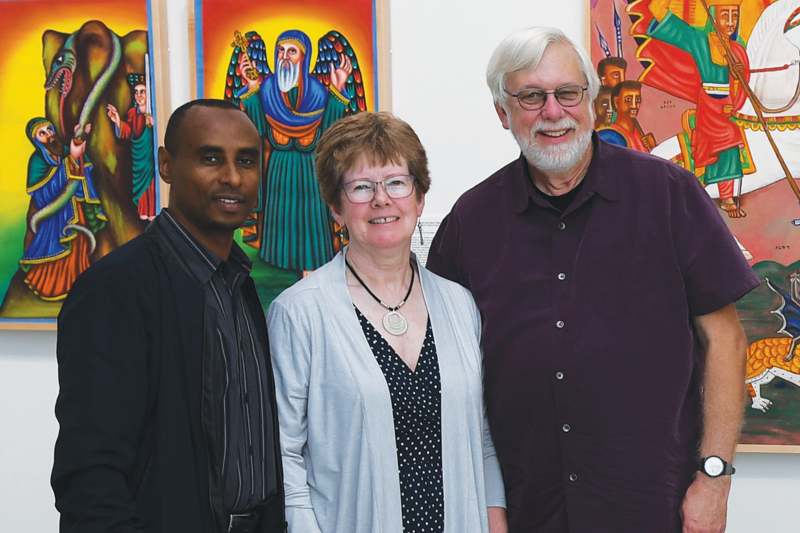
Hope exhibited some of the Sobanias’ art in the De Pree Art Center and Gallery in 1992, but the collection has grown in the meantime. Since 1993, Neal has been collaborating with Dr. Raymond Silverman of the University of Michigan’s art history faculty to continue to study Ethiopia’s art traditions, with a particular focus on the contemporary Christian Orthodox art and its relationship to the work of the past. Their research together, which through the past quarter century has led to a variety of exhibitions and scholarly publications, will soon culminate in a book that is examining Ethiopia’s contemporary art tradition.
It was during one of their visits to Ethiopia in the latter 1990s that the two scholars met a young artist who would soon play an important role in their work — and in whose life Hope would soon play an important role as well.
“Everyone we asked who the best young painter in Aksum was kept saying ‘Daniel,’” Neal said.
Daniel Berhanemeskel ’03 was the 17-year-old son of one of the artists who Neal and Silverman had met previously, Berhanemeskel Fisseha, and was the third generation in his family to paint in the Ethiopian Orthodox Christian tradition, following also his great-grandfather, Yohannes Teklu. “My dad learned from him, and I learned how to paint from my dad,” Daniel said. Daniel started at age 6 or 7 by copying his father’s work and began creating his own paintings at age 11 or 12.
Neal invited him to consider attending Hope, an opportunity made possible in part by the college’s Geneva Scholarship fund for international students. Daniel majored in art advised by faculty member Del Michel, who encouraged him as he continued to find his voice as an artist. He also worked with Neal on his research, including collaborating to develop the 2002 Smithsonian exhibition “From Monastery to Marketplace: Tradition Inspires Modern Ethiopian Painting,” in which he as well as his father and great-grandfather also had work displayed.
“When I visit home, one of my friends tells me that when I was young, I was so eager to go to America to study art, and it is a dream come true,” said Daniel, who like Neal returned to speak during the opening weekend, and who had work in the exhibition in addition to having donated a piece that he had purchased for the college.
“I don’t think I would have been the same person that I am now had it not been Del who let me do the things that I wanted to explore,” he said. “It was very rewarding and I am thankful to Neal, Liz, Ray, Mary (his wife), Del and Sally [Del’s wife], who have been very supportive to this day.”
Daniel subsequently earned a Master of Fine Arts degree at Michigan State University. He now works in internet technology in the Washington, D.C., area, but also remains active as an artist. He had an exhibition at the Tobya Art Gallery in Seattle, Washington, a few years ago, and had work in the Parallax Art Fair in London, England, this past July.
“Daniel has been this extraordinary informant and interpreter-translator for us, because he’s an artist talking to artists,” Neal said. “So he understands the questions we’re asking and they understand they’re talking to an artist, and they can talk about it without figuring out, ‘Well, how do I explain this to somebody who doesn’t know anything?’”
The three together have become such a common sight that the artists and shopkeepers of Aksum take notice when they aren’t together. “In fact, it’s quite funny that if I happen to go back on my own, everybody wants to know where Dr. Ray and Daniel are, and if Ray is there, they want to know where Daniel and I are, and if Daniel’s there, it’s ‘Where are Dr. Neal and Dr. Ray,’” Neal said.
Neal, in turn, can tell the story of each piece that he has given to Hope, including, especially, of the artist who created it and why, or of the shopkeeper who sold it and of the visit itself. The relationships and memories are a bonus that the Hope student 50 years ago might not have anticipated, but that the scholar of 2018 treasures the most.
“That’s been the richness of this: the relationships that we’ve formed — and friendships — with artists and others in the country, who continue to welcome us every time we come back,” he said.

